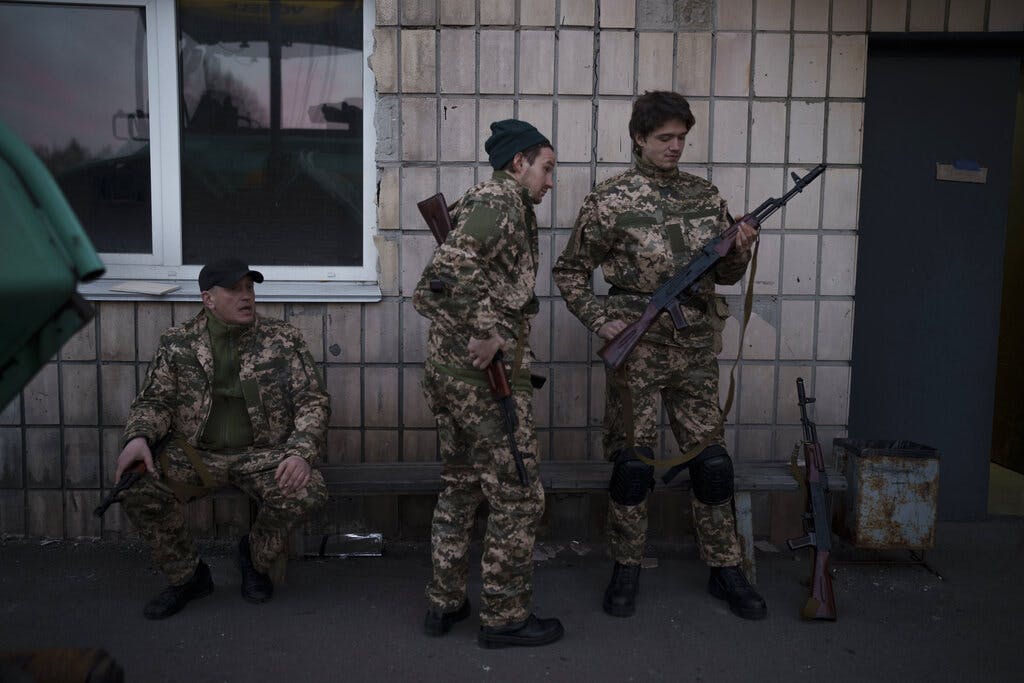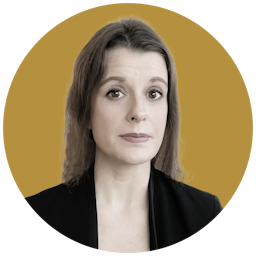Foreign Fighters Swarm to Ukraine, Sowing Future Conflict
There is a certain logic to these deployments. The number of Russian casualties has been high. As many as 10,000 Russian servicemen have been killed since the invasion began. Vladimir Putin could soon run out of men for his war machine.

ZURICH — Several thousand Muslim Chechen fighters are reportedly assembling on the edges of Kiev. Hundreds are believed to have fought at Mariupol. Syrian volunteers, filmed last week holding assault rifles, Russian flags, and chanting pro-Kremlin slogans, are en route to the Ukrainian frontline. Syrians are also part of Ukraine’s foreign legion to fight against Russia. There, they join some 20,000 foreign volunteers, including an estimated 3,000 Americans.
There is a certain logic to these deployments. The number of Russian casualties has been high. As many as 10,000 Russian servicemen have been killed since the invasion began. That would put Russian casualties in one month at more than the entire American losses in 20 years of fighting in Iraq and Afghanistan. Vladimir Putin could soon run out of men for his war machine.
Moscow now says that up to 16,000 Syrians are on the way, all ostensibly skilled in urban combat. On some reports, Syrians who join the frontlines will each receive $1,100 from the Russian government — a pricey sum, if they’re lucky. They are also entitled to $7,700 in case of injuries. It’s unclear whether they will be paid in rubles.
Muslim fighters are also pouring into Ukraine to fight on the side of Kiev. Ukraine’s forces were from the outset outmanned and out-armed. President Zelensky announced the International Legion for the Territorial Defense of Ukraine to ameliorate precisely this imbalance in the order of battle. On the legion’s website, the summons: “Save the world. Stand with Ukraine.”
To be sure, foreign fighters are hardly new to war — or to Ukraine. Muslims have also served in the Russian military since the tsarist era. Yet their presence is especially visible in this conflict. It is one of the many subplots emerging in the war, bringing with it a host of risks. The conflict in Ukraine could yet destabilize Europe in other, yet unforeseen, ways.
For some of the Muslim fighters battling alongside Moscow, Vladimir Putin’s invasion is regarded as part of a wider jihad against the West, of which Ukraine is either viewed as being a member or otherwise culpable for wishing to be so. Leaders of the Islamic State, say, have praised the war as “divine punishment” for the West’s “disbelief in God Almighty.”
While Islamic State leaders discourage their followers from taking sides in the conflict, they, as well as some from Al Qaeda, have encouraged their followers to exploit the war to wage jihad against “non-believers.” The Chechen strongman and Kremlin ally, Ramzan Kadyrov, has similarly rallied Muslim fighters to embrace the war as religious duty. Some 12,000 members of the Chechen special forces have crossed into Ukraine. More are said to be en route.
In Ukraine, Mr. Kadyrov’s forces and other Russian-aligned Muslim fighters have become a symbol of Russian tyranny — and, for some, tensions between Muslims and Christians. Fighters from the Azov Battalion, an ultranationalist arm of Ukraine’s National Guard, have filmed themselves smearing bullets in fat from pork, which is forbidden to Muslims.
The tale of far-right European and other Western extremist groups flocking to the conflict is but another harrowing subplot emerging in what is already a treacherous war. Ukraine is itself home to Chechen exiles, many who have not forgiven Mr. Kadyrov and his father, Akhmad Kadyrov, for aligning with Moscow and crushing their independence movement in 2000.
They, too, have pledged to fight. As have Syrian mercenaries who, having blamed Mr. Putin and Russia for their country’s destruction, are eager for payback.
Such dynamics are concerning for many reasons. The deployment of foreign fighters from Syria, Chechnya, and other regions into Ukraine internationalizes the war. It could link it to broader cross-regional dynamics, particularly in the Middle East and the Caucasus.
The North Caucasus, say, have over the years become fertile ground for clashes among competing Islamic movements. Since 2013, more than 7,000 locals have left to join the Islamic State. There, tensions between dueling Muslim groups could yet harden, with the risk of spillover to neighboring states — most immediately to Georgia, which has aligned itself with Ukraine in the conflict. Earlier this month, Georgia applied for European membership.
Other questions are growing. What of demobilization and disarmament at the war’s end? What of deportation? After the war, where will foreign fighters — Muslim, as well as the thousands of others who have made their way — go? Who shoulders the accountability?
Mr. Putin’s gambit for Ukraine has entangled Muslims of different national origins and competing ideological orientations on the battlefield. In similar fashion it has captured other contending interests. The war in Ukraine could then yet inflame ideological and sectarian antagonisms far beyond the battlefield. The trajectory of war is seldom linear.

